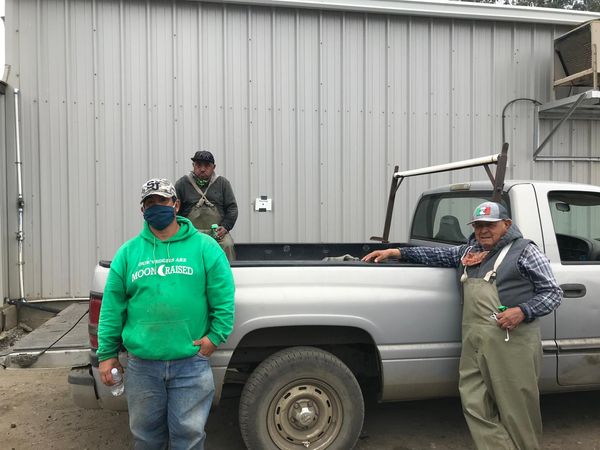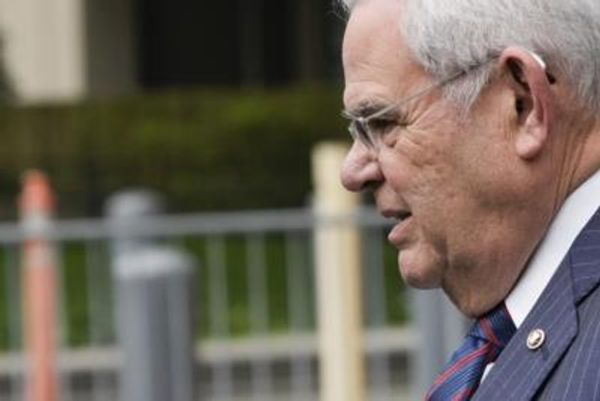
Odysseus, the first US-built spacecraft to land on the moon in more than 50 years, could outperform expectations and still be sending back crucial scientific data weeks beyond its initial planned seven- to 10-day period of operation, mission managers said on Wednesday.
The lander, carrying Nasa equipment analyzing the lunar surface, will be put into sleep mode in the coming hours when its solar panels no longer receive sunlight at the beginning of a weeks-long “lunar night”, they said at an afternoon press conference in Houston.
It was expected that Wednesday or Thursday would see the final transmission from the Nova-C lander, which was conceived and constructed by the Houston-based commercial aerospace company Intuitive Machines.
But Intuitive Machines’ co-founder and chief executive, Steve Altemus, told reporters that there were plans to try to reawaken the spacecraft in a few weeks’ time when sunlight returned. If successful, it would be a remarkable resurrection of a mission that was plunged into uncertainty when Odysseus toppled on to its side during touchdown last week.
“What a magnificent job that robust, plucky lander did, all the way to the moon and then on the surface to deliver back to Nasa and our commercial companies so much data and information and science,” he said.
“It’s just an incredible testament to how robust and, like someone said, beastly that little spacecraft is.”
Altemus said the reawakening attempt could come when sunlight once again illuminates its solar panels “in the next two to three weeks”.
“Can we, will we, get a signal back from this lander? We’re excited about that,” he said.
The 14ft (4.3-metre) hexagonal, six-legged craft made history last Thursday when it became the first private spacecraft to make a soft landing on the moon, and first US mission to do so since the final manned Apollo mission in 1972.
Odie, as the lander became affectionately known to employees of Intuitive Machines, landed in the rocky and crater-rich lunar surface near the moon’s south pole that Nasa is targeting for its next crewed landing mission, Artemis III, planned for late 2026.
There were fears its payload, a suite of Nasa equipment designed to gather data about the lunar environment, including analyzing potential sources of water that would help sustain a future moonbase, had been compromised by the flawed landing.
But Altemus said the data received proved it had been “a very successful mission to this point”.
He said: “What we’ve done in the process of this mission is we’ve fundamentally changed the economics of landing on the moon.
“We’ve kicked open the door for a robust thriving cislunar economy in the future. It’s really a point in history that we should celebrate, as we move forward to subsequent missions around the moon.”
The IM-1 mission was conducted as part of Nasa’s commercial lunar payload services (CLPS) program, in which the agency pays “seed money” to private companies to develop hardware and software that can be used for Artemis missions.
Nasa paid $118m to get it off the ground, with Intuitive Machines funding a further $130m ahead of its 15 February launch from Florida’s Kennedy space center on a Falcon 9 rocket from Elon Musk’s SpaceX company.
At a separate press conference at Cape Canaveral on Wednesday, two days before SpaceX Crew 8 astronauts are scheduled to fly to the international space station aboard another Falcon rocket, the Nasa administrator, Bill Nelson, hailed the CLPS program.
“We leverage the few little nickels that we have by getting the commercial industry to foot some of the bill. They’re producing a lunar economy as they continue to grow and experiment and invent,” he said.
“A good example of how we are sharing the cost of the entire exploration program as we go back to the moon, not only with commercial partners, and that’s certainly true in the Artemis program, but with international partners.
“There are substantial international investments in each of the steps as we go back to the moon, so all of this is leveraging what we are able to get out of the Congress and to do all the more with.”
Even with the extra funding, however, the Artemis program is still billions of dollars over budget and several years behind schedule. The space agency announced last month that Artemis II, a 10-day expedition to send a crew around the moon and back to test life support systems, would launch no earlier than September 2025.
Artemis III, meanwhile, set to land four astronauts, including the first woman, near the lunar south pole, will be delayed another year until September 2026.
Nelson, though, remained upbeat.
“These CLPS missions, before Artemis III ever touches down, are going to be extraordinarily valuable. Each of these [Odysseus] Nasa instruments are all a part of getting additional data that we need,” he said.
Two further Intuitive Machines launches are scheduled for later this year, including an ice drill to extract ingredients for rocket fuel, and another Nova-C lander containing a small Nasa rover and four small robots that will explore surface conditions.







